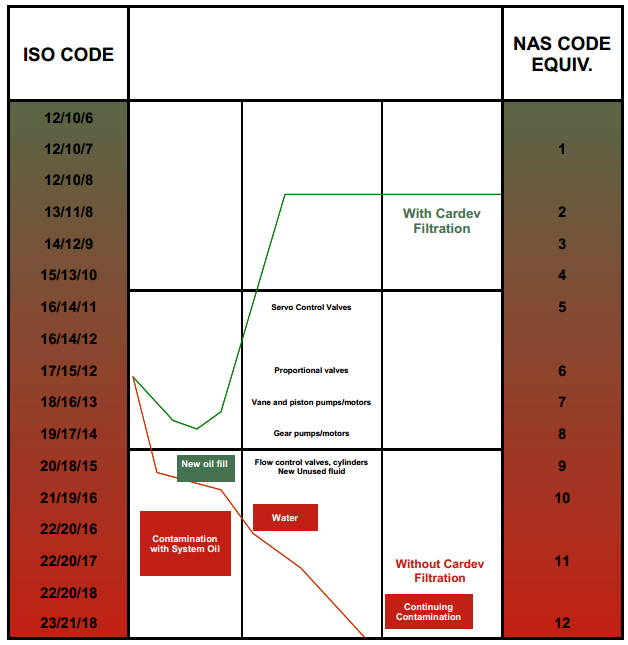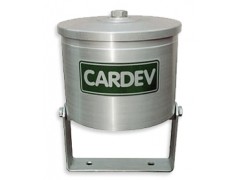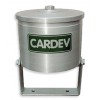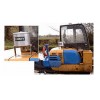Small Fixed Installation Unit
The Cardev SDU H8 bypass filter is suitable for a variely of applications, including mobile plant and industrial applications. The SDUS is permanently installed using the bracket supplied. A pressurised faed (up to 8 Bar) is taken from a hydraulic circuit, and a return line (to tank) completes the bypass circuit.
For systems operating at higher pressures (up Ia 350 Bar), the SOU H350 is also available.
Oil Filtration and Coolant Handling Specialists
- Fitting The Cardev SDU8 Will
- Help In Extending Oil Drain Periods
- Engine Components Are Better Protected Due To Clean Oil
- This Unit Should Be Mounted
- Off The Engine To Reduce Vibration
- Oil Feed Taken From Main Oil Gallery
- Return To Crank Case Or Sump
- Built In Flow Restrictor To Avoid Oil Pressure Loss
- Connections Are 1/4 BSP
SDFC Cartridge Description
The Cardev Super Duty Filter Cartridge is a depth cartridge made of long fibre cellulose with a
full diameter polyester protection disc. The filter is covered with nylon and encased in an outer tube which forms an
integral part of the cartridge. The cartridge can be used on all pure oil based products such as hydraulic, engine and
gearbox oils. The filtration is carried out at low pressures, off-line, cartridge pressures are controlled between 1 and 4
bar with a 6 bar maximum.
Action of Cartridge
The filter cartridge acts by absorption and adsorption in a continuous recycling process. The long cellulose fibres attract
the water formed either through the combustion process or by condensation and absorb it like a sponge, whilst at the
same time rejecting the larger oil molecules which are forced to pass between the tight windings of the cartridge. Thus
the cartridge, by removing water inhibits the production of acids. As the oil passes through the cartridge, minute
particles of carbon, wear metals and silicon are extracted from the oil by adhering to the many surfaces of the filter.
Through the continuous removal of water and contaminants the catalysing effect of the oil additives will be prevented
enabling the oil life to be extended within the original specification laid down by the manufacturer. The additional
extension of oil life will be dependent upon the operating conditions and maintenance programme applicable to the
machine.
important note-additives
While the filter is extracting the water and contaminants it is continuously safeguarding the desirable elements
(additives) compounded within the oil itself. These typically include, dependent on use, dispersants, VI improvers,
lubricity agents, fungicidal, anti foaming and gelling additives. These additives are held in suspension and their levels
can be critical if the oil is to maintain its beneficial effect. The Cardev filter will not remove these additives but enhances
their life by the removal of contaminants which cause them to be activated.
Disposal
Used cartridges should be disposed of in accordance with local regulations and are made from fully combustible
materials.
Cartridge Change Intervals
Taking into consideration the high dirt and water retention capacity, the filter change intervals can be individually
determined according to the contamination and volume of the oil.
With a normal machine installation the recommended cartridge change frequency is 500 operating hours or 6 mths
whichever comes first. Where the machine operates in adverse conditions this change frequency should be reduced to
250 operating hours. The maximum life of the cartridge is 6 months.
Oil Throughput
Throughput levels are dependent on viscosity, temperature, degree of contamination and oil pressure. However, as a
guide for an SDFC under the following conditions; ISO 46 grade hydraulic oil at 40 degrees centigrade with a 3 bar inlet
pressure the flow rate is approximately 4 litres per minute.
Operating Temperature
The cartridge will operate within the operating specification of engine, hydraulic and gearbox oils –10 to +95 centigrade.

RISK RECKONER
How The ISO Code Works
• Readings refer to a 100 ml oil sample
• There are 3 one and two-digit numbers
• The first refers to the number of particles above 2 microns
• The second refers to the number of particles above 5 microns
• The third refers to the number of particles above 15 microns
• Use your oil analysis particle counts to identify the relevant code number
(The NAS code, used in Europe, is similar to the ISO code, but counts particle in four categories —
5µ, 15µ, 25µ and 50µ)
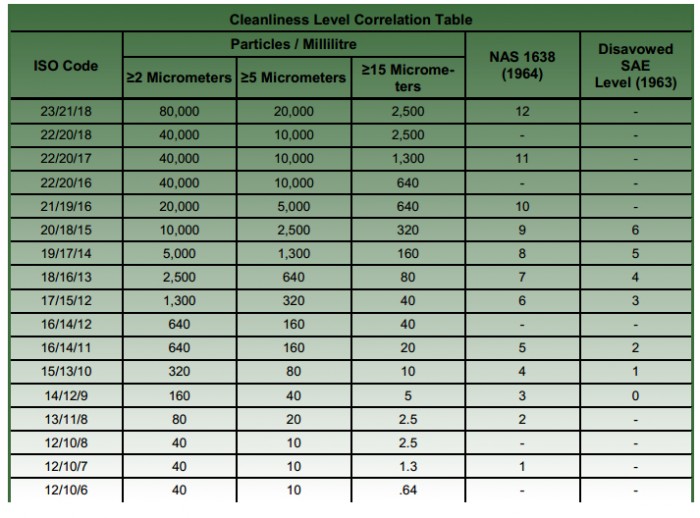
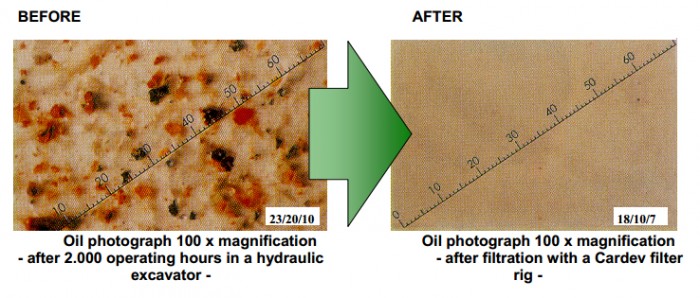
How to use the Cardev Risk Reckoner
1. Check your machinery type on the chart below
2. Look for the most appropriate ISO code or NAS grade
3. Compare you actual reading with the recommended cleanliness class
4. The further into danger level, the greater the risk of catastrophic failure
